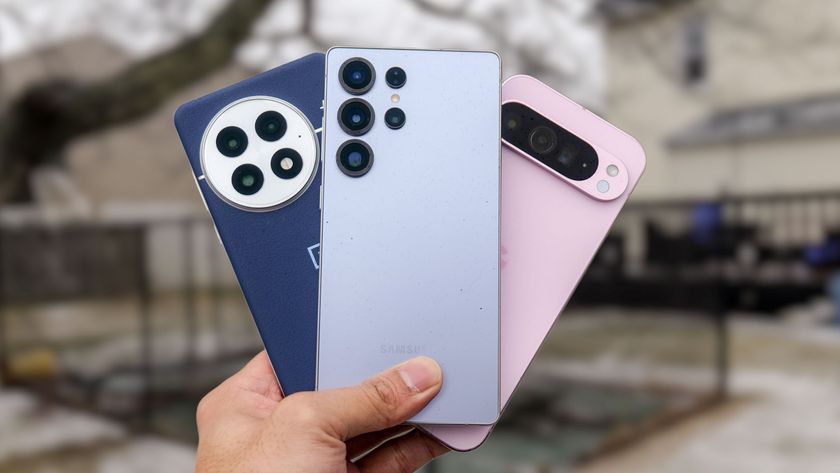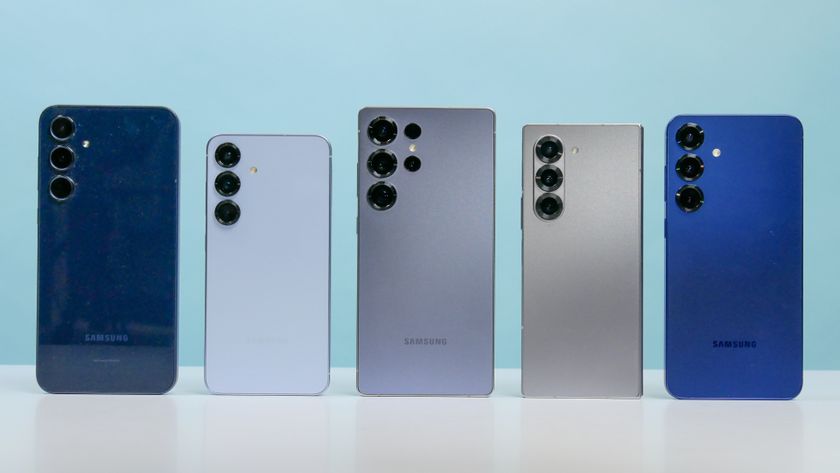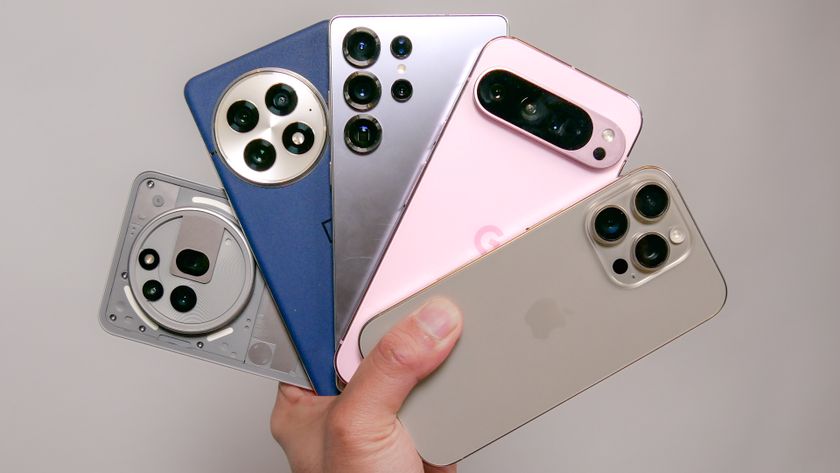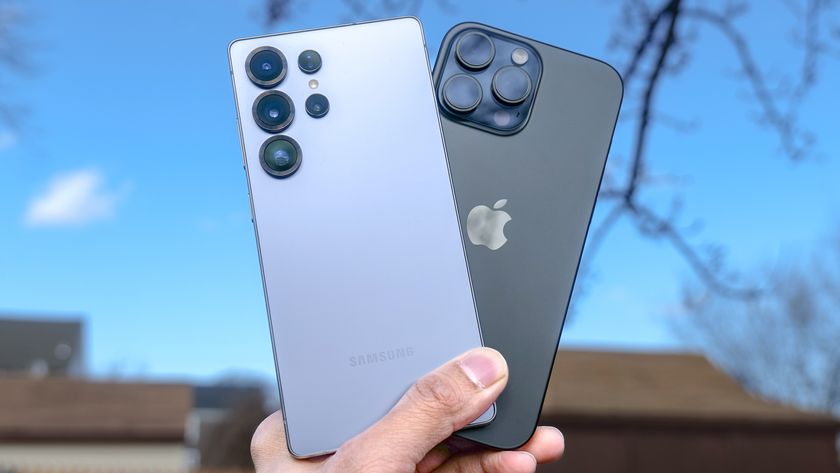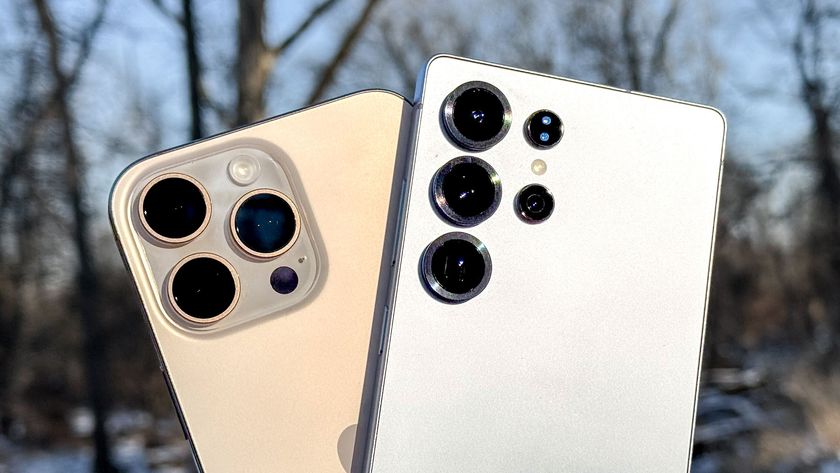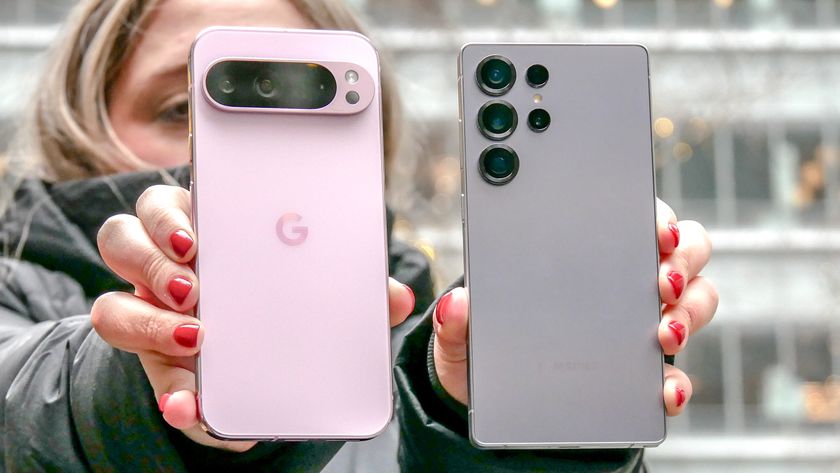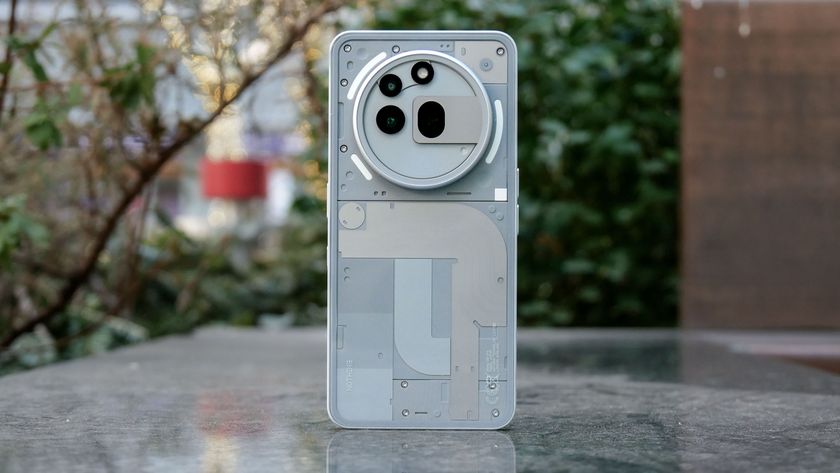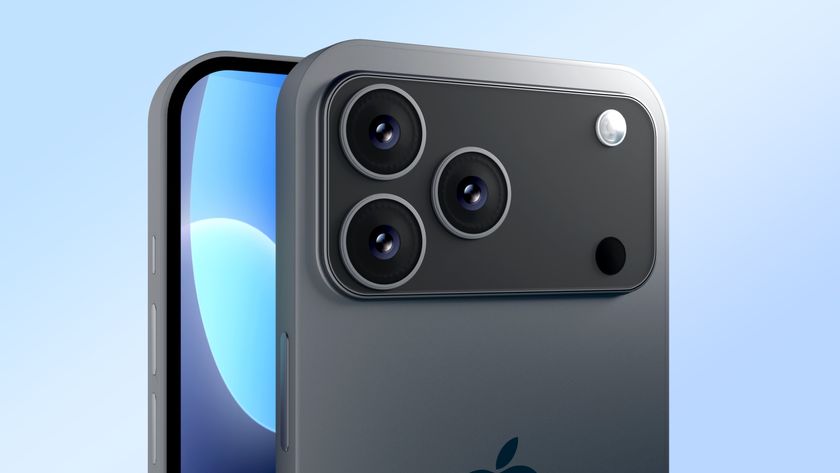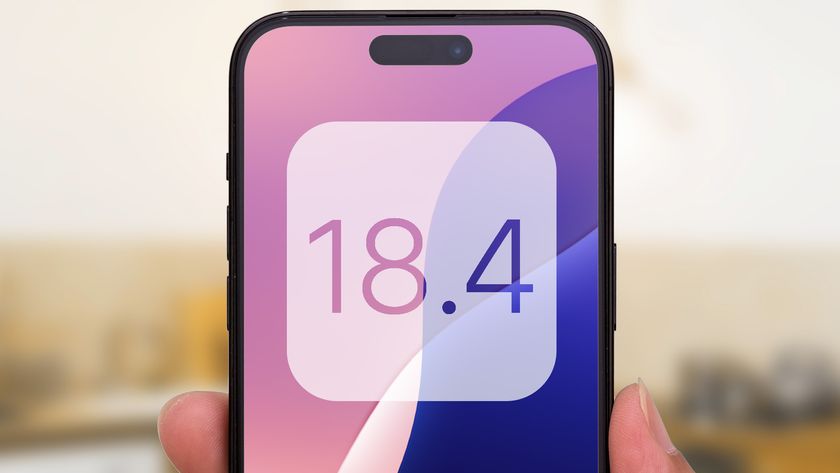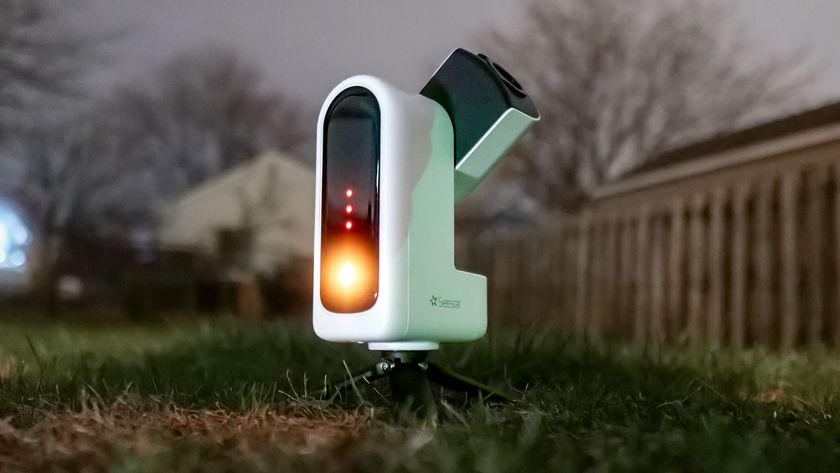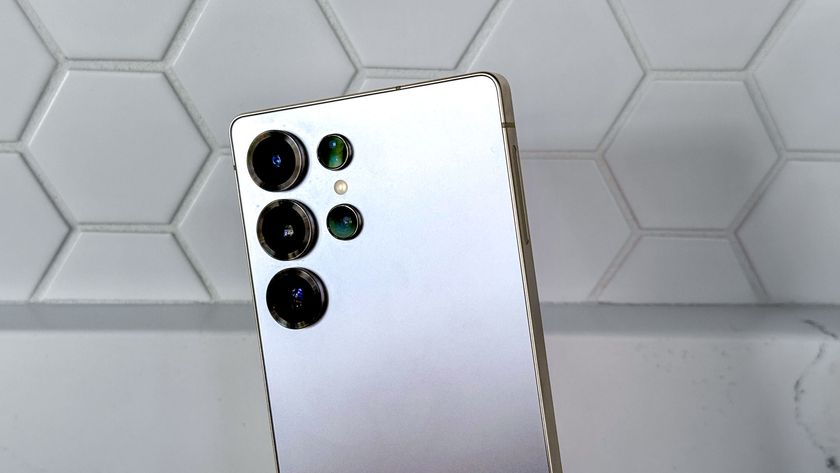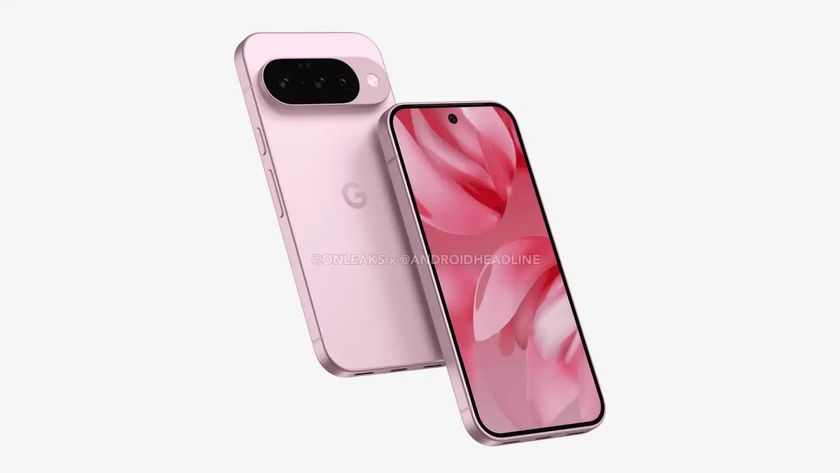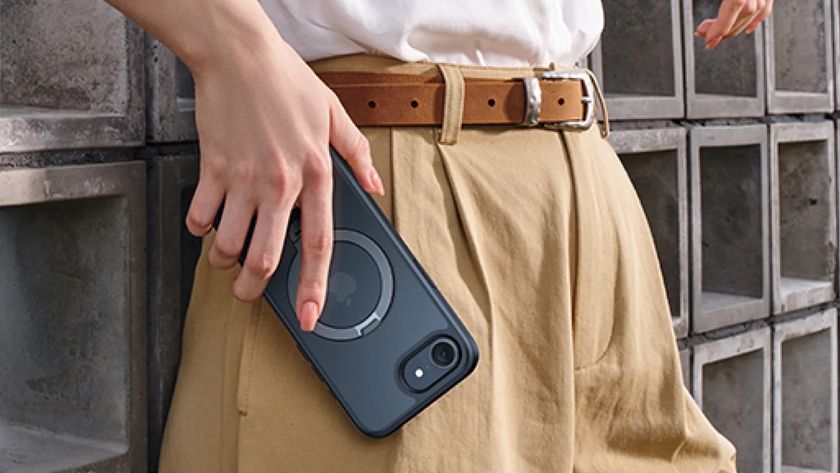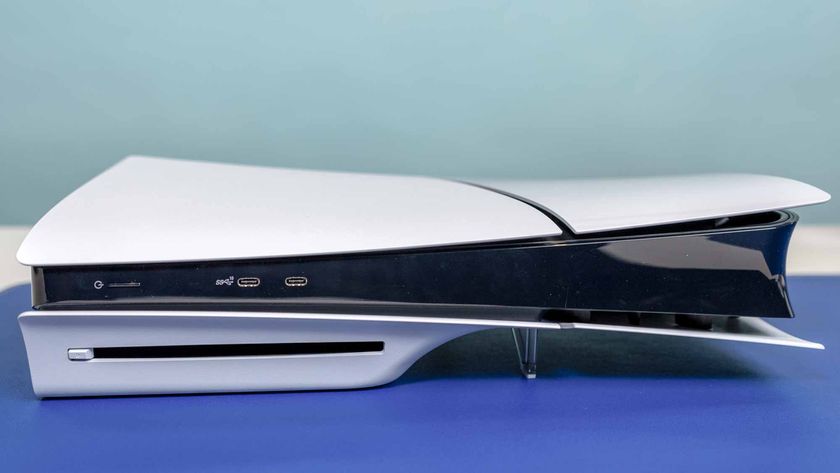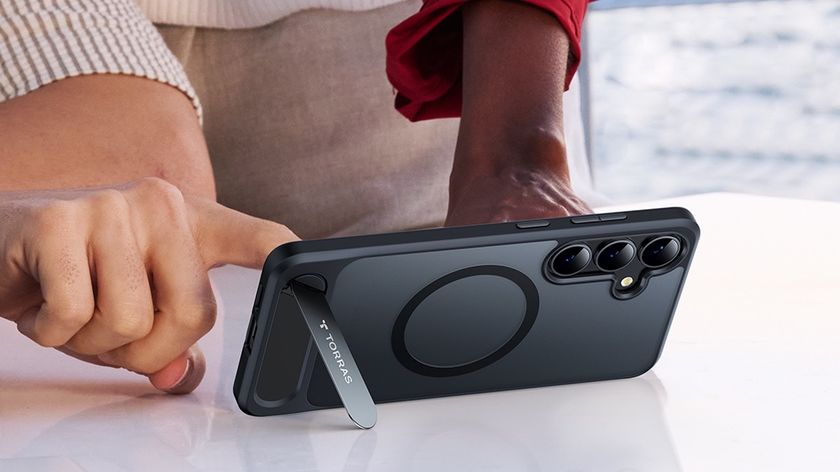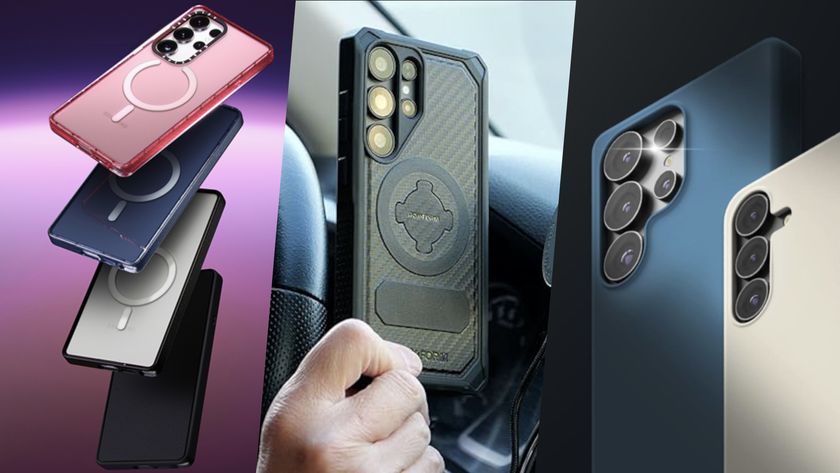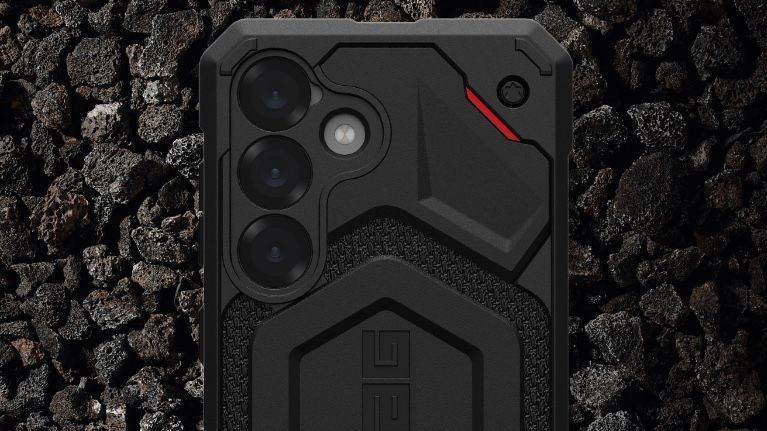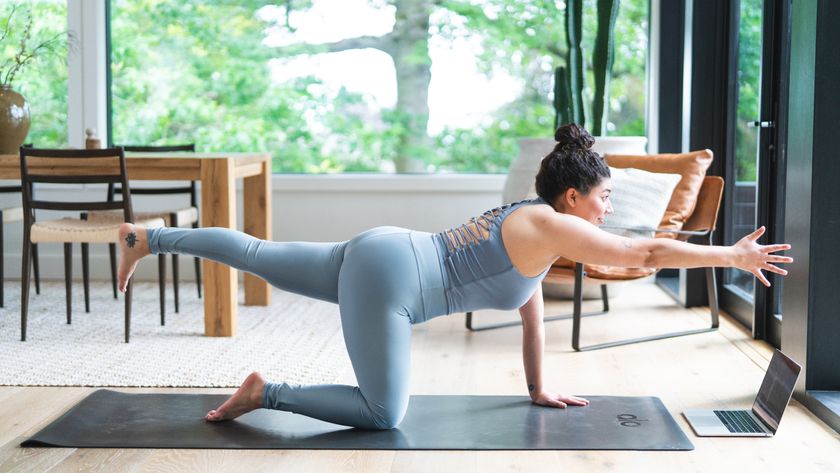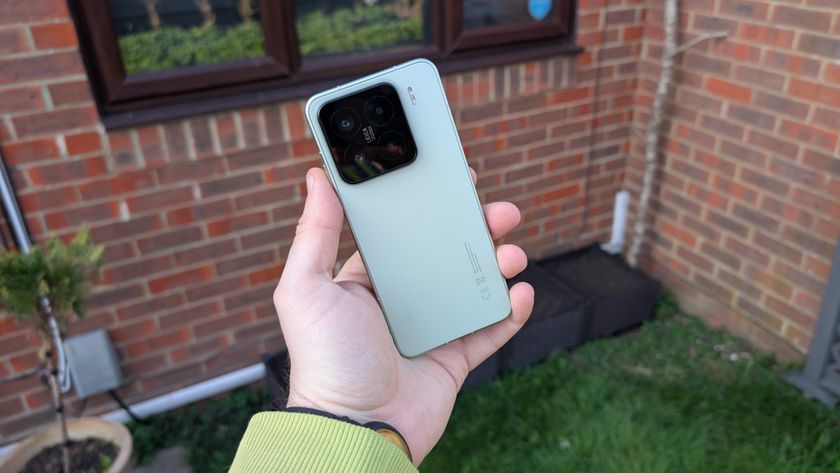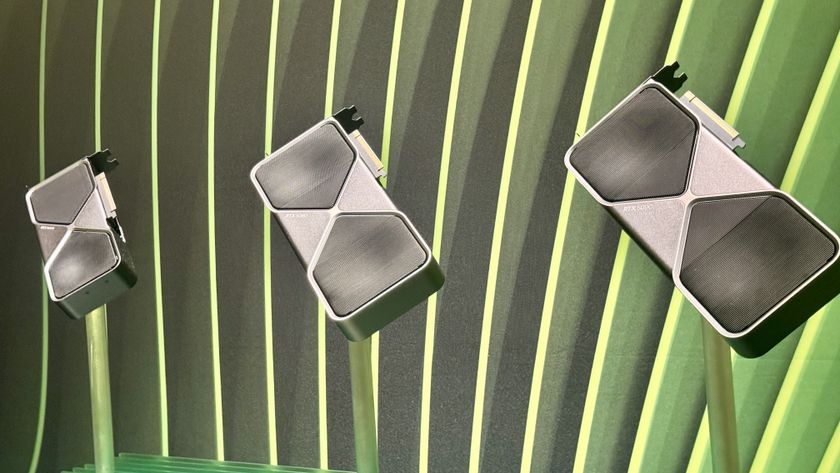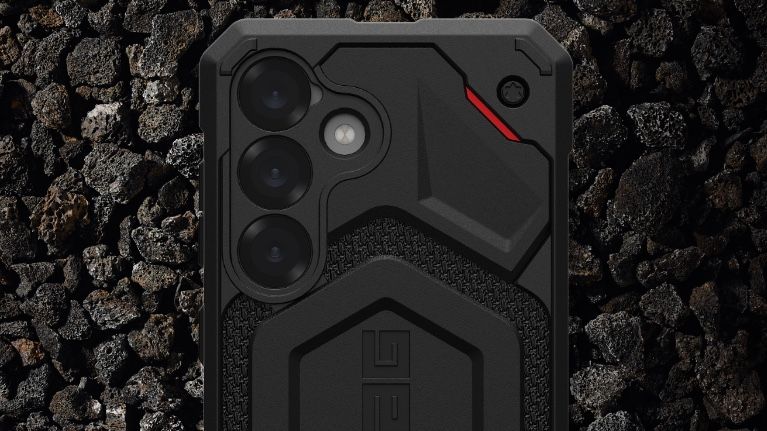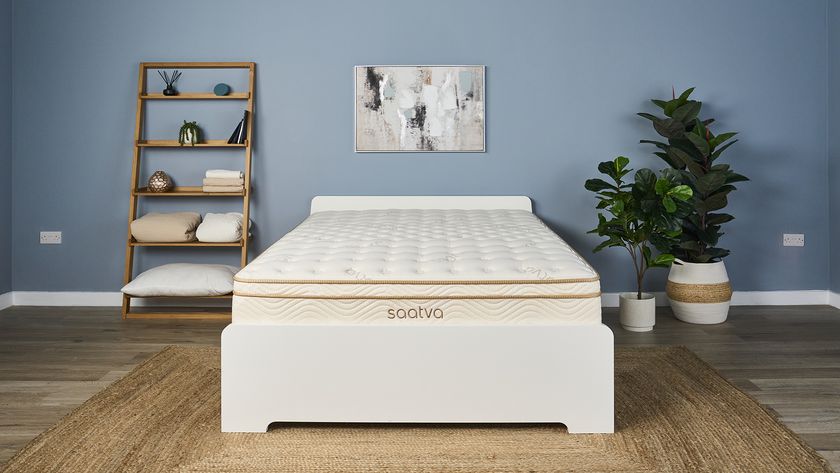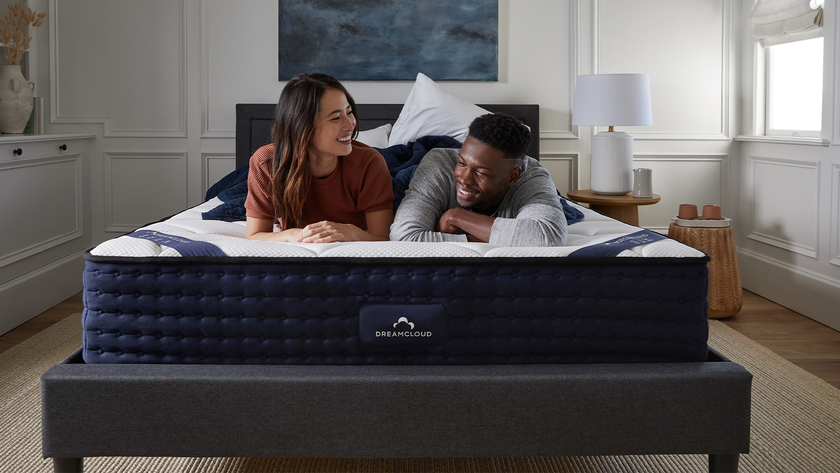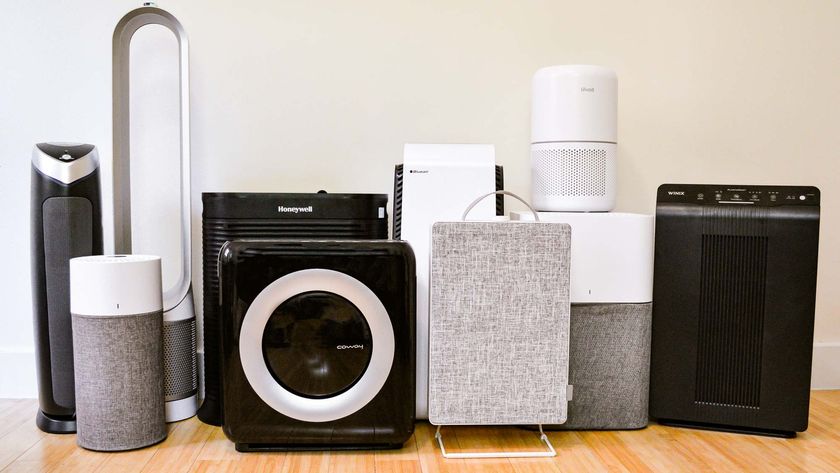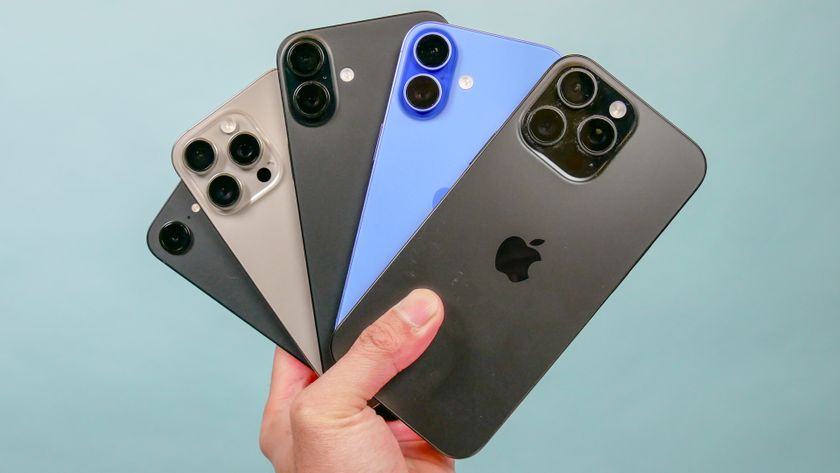Best camera phones in 2025
We've tested all the best camera phones — these are the ones that rise to the top
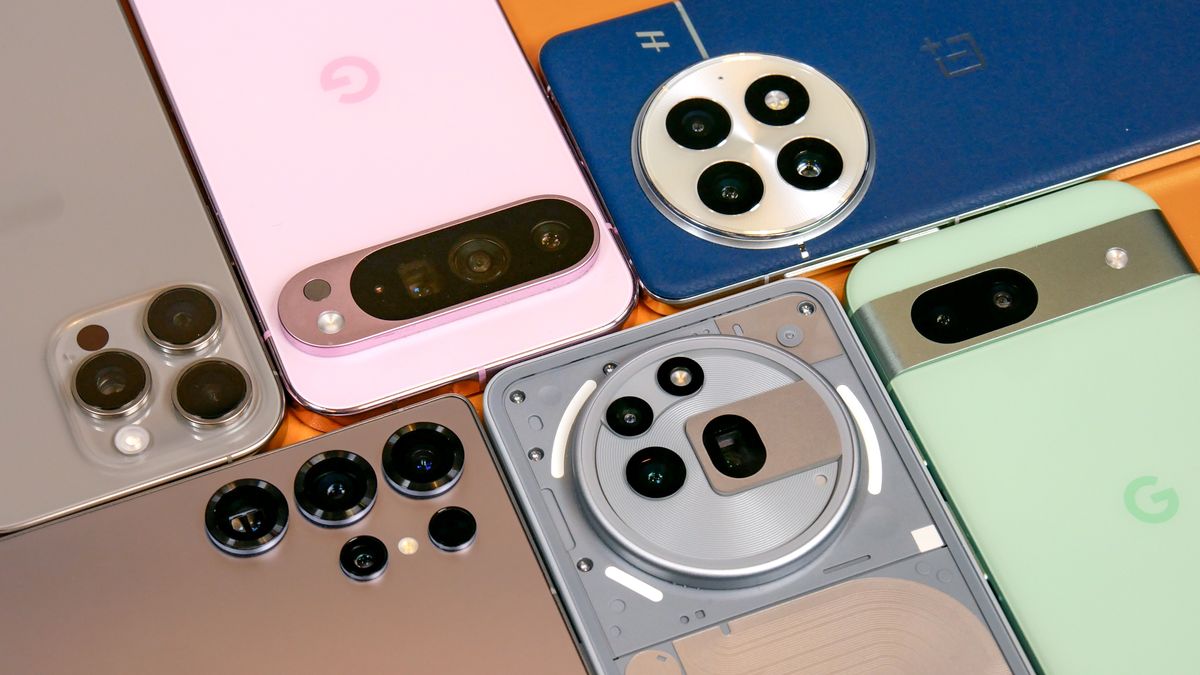
Ask anyone what’s the most important feature they look for when buying a phone, I guarantee you that a lot of them will tell you that having excellent cameras will influence their buying decision. I’m not surprised by this because the best camera phones offer outstanding optical quality, allow you to zoom farther, see what you can’t see in the dark, and even capture jaw dropping 4K video.
I’ve been reviewing phones for 16 years now and one skill I’ve acquired in the process is understanding the controls and functions of a camera, and how to master them to get the best results.
After testing dozens of phones throughout the year, along with my other colleagues, we’ve come to the agreement that the Galaxy S25 Ultra is the best camera phone around — mainly due to how its AI ProVisual Engine enhances its performance. With the arrival of new Galaxy AI features, like improved generative edit features and nightography, make it a well-rounded package for photographers.
With the Galaxy S25 Ultra's arrival, it displaces the iPhone 16 Pro from the top spot (which shares the same camera system as the iPhone 16 Pro Max, but at a lower cost). It's still a robust camera experience with the arrival of Apple Intelligence, giving users a taste of generative AI's power at cleaning up photos.
Samsung's Galaxy S25 release joins a robust selection of Android devices with impressive cameras. I also recommend the Pixel 9 Pro because it has the same cameras as the Pixel 9 Pro XL, paired with other photo taking magic like its Add Me feature. The OnePlus 13 also impresses me, as OnePlus continues to improve camera performance. And while the Pixel 8a and iPhone 16e are two fantastic mid-range options, the announcement of the Pixel 9a could change up this list once I properly test it.
Speaking of photo comparisons, I’ve pitted many of the flagships in the last year against each other in our 200 photo face-off series. I’ll mention them in detail below, but the reason why I point this out is because I capture the same set of photos between the devices and pixel peep their differences to ultimately see which comes out on top.
Here's a summary of the best camera phones you can buy right now based on our head-to-head testing of each phone's camera capabilities. Keep scrolling to find the in-depth reviews of every camera phone featured here.

I'm the senior editor for mobile at Tom's Guide, where I've been working since 2023. I've been covering mobile tech for 16 years in total, starting with old school feature phones and early smartphones powered by Palm OS and Windows Mobile. I'm a New Jersey native and keep up with the latest mobile tech.
The quick list
Here's a summary of the best camera phones you can buy right now based on our head-to-head testing of each phone's camera capabilities. Keep scrolling to find the in-depth reviews of every camera phone featured here.
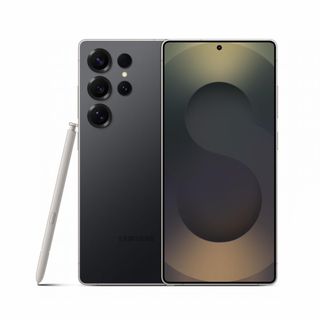
The latest Samsung flagship gains an upgraded 50MP ultrawide camera, but its performance it amplified thanks in part to the enhancements made to photos with the help of its new AI ProVisual Engine. There are also new Galaxy AI tools that can make photos look even better.
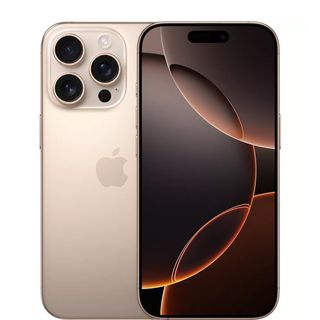
Improvements to every rear camera vault the iPhone 16 Pro to the top of the best camera phone list. We're particularly impressed with the improved zoom lens, while low-light photos keep this phone ahead of the competition. The Camera Control button is a clever addition, too.
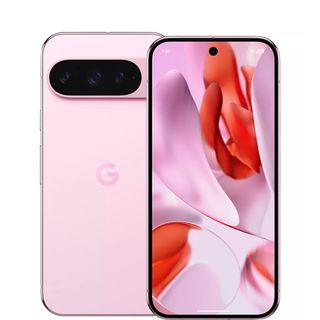
Don't expect many hardware changes to the Pixel 9 Pro's camera setup, though an upgraded ultrawide lens does add an excellent Macro Focus feature. The real story is the top-notch photo processing capabilities as well as the new photo editing tools made possible by the Pixel's Tensor G4 chipset.
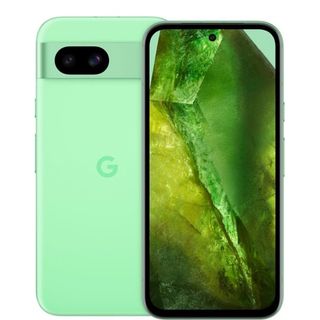
Google continues to prove you don't need to spend big bucks for a great camera phone, as its latest sub-$500 device, the Pixel 8a matches up well with any other entry on this list. The phone also offers AI-powered editing tools similar to what you get on the Pixel 8 flagships.
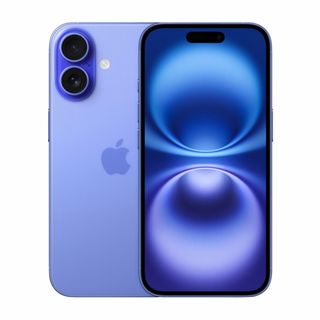
The iPhone 16 proves you don't have to pay Pro prices for a great camera phone, especially after Apple increased the size of the ultrawide sensor and added a Macro photo mode for terrific close-ups. Otherwise, the iPhone 16 delivers the same stellar shooting abilities as its predecessor.
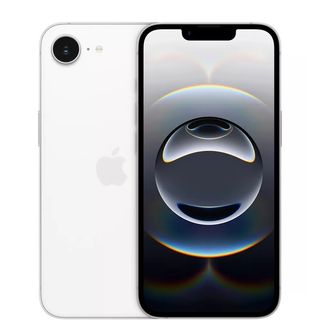
The iPhone 16e makes the most of its one rear camera, a 48MP shooter that can also provide surprisingly sharp 2x zooms. Apple’s photo processing is the star here, as the iPhone 16e produces photos that compare with far more elaborate camera phones.
Load the next 3 products...
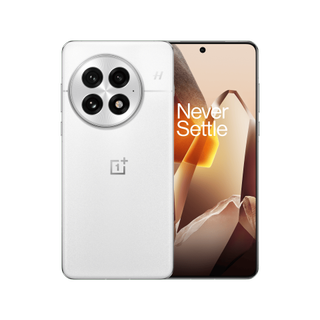
OnePlus continues to work on its cameras, so it's no surprise that the latest set of improvements makes the OnePlus 13 the best one in the series thus far. Besides high-quality images from its main lens, the OnePlus 13 leans heavily on AI to deliver sharper telephoto photos and better adapts to fast moving subjects so they remain sharp and clear.
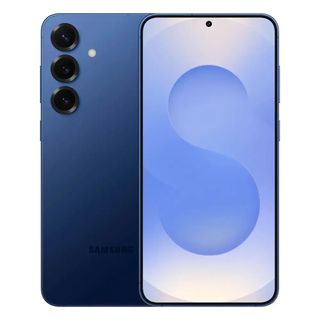
The Galaxy S25 puts a flagship camera phone in your hands for $500 less than the S25 Ultra. You'll get bright, colorful photos, along with the Galaxy AI-powered photo editing tools of Samsung's more expensive S25 models.

An improved main camera vaults the Galaxy Z Flip 6 ahead of other foldable phones when it comes to camera performance. The 50MP sensor can also capture zoom shots that replicate a 2x optical zoom. You also get help from Galaxy AI tools when it comes to image editing
The best camera phones you can buy today
Why you can trust Tom's Guide
The best camera phone overall






Specifications
Reasons to buy
Reasons to avoid
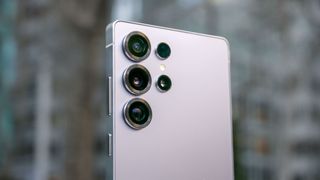
While the iPhone 16 Pro Max edges out the Galaxy S25 Ultra in a 200-photo face-off, other Galaxy S25 Ultra vs iPhone 16 Pro Max camera comparisons tilt toward Samsung. The Galaxy S25 Ultra beats the Pixel 9 Pro XL in a camera comparison and also finishes ahead of the OnePlus 13.
If you’ve used a Galaxy S Ultra lately, you know exactly the kind of camera performance to expect from the Galaxy S25 Ultra. The camera setup is similar last year's model, with the exception of an upgraded 50MP ultrawide camera and a new AI ProVisual Engine. As a result, it pulls in more detail and offers better macrophotography performance.
The Galaxy S25 Ultra comes back with a 10MP telephoto with 3x optical zoom paired with a 50MP telephoto with 5x zoom. It still supports a 10x zoom by shooting images at full 50MP resolution and then cropping in on an area of detail. It works well just as before, but it does pull out slightly sharper results thanks to the image processing algorithms with the new AI ProVisual Engine.
We do like the AI tools Samsung includes for photo-editing, like the ability to resize and move around the subjects of a photo with the help of generative AI. Samsung also improves it by being better at detecting the shadows casted by people. Then again, those features are also available on Samsung’s less expensive S25 models.
Read our full Samsung Galaxy S25 Ultra review.
The best iPhone camera phone






Specifications
Reasons to buy
Reasons to avoid
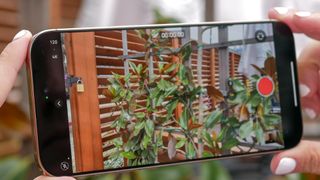
The iPhone 16 Pro and iPhone 16 Pro Max have matching camera setups, so find out how those cameras perform in my iPhone 16 Pro Max vs. Galaxy S24 Ultra and iPhone 16 Pro Max vs. Pixel 9 Pro XL camera face-offs. I've also used it for astrophotography to capture planets, stars, nebulas, galaxies, and more.
Point to a camera on the back of the iPhone 16 Pro, and Apple has improved it. The biggest change is to the telephoto lens, which now matches the tetraprism design and 5x optical zoom added to last year's iPhone 15 Pro Max model. But the main camera on the iPhone 16 Pro is now a faster Fusion camera while the ultrawide lens gets an upgraded 48MP sensor.
Having good specs on paper is one thing, but the iPhone 16 Pro delivered great results in our hands-on testing, with brighter and more detailed action shots, colors that looked more natural in images shot by the ultrawide lens and some of the best low-light photos we've seen. Zooms look better, too, even if the Galaxy S24 Ultra continues to deliver the best close-ups of any phone I've tested.
A Camera Control button on the side of the iPhone 16 Pro makes it easy to launch the camera, snap photos and even control different modes without have to use any on-screen controls. It's a useful addition, though it will take some getting used to. When it's time to study your pictures, the iPhone 16 Pro offers a bigger 6.3-inch screen to view them on. The arrival of Apple Intelligence later this year introduces a Photo Clean Up tool that matches a similar feature on the latest Pixel phones, though we find Google's version to be a little more polished.
The iPhone 16 Pro Max duplicates the standard Pro's camera setup and its features, including improved video shooting capabilities that let you 4K 120fps slow-motion video. But the iPhone 16 Pro Max also costs $200 more than the iPhone 16 Pro. Given that the photo experiences are so similar, we think camera buffs should go for the Pro and pocket the savings, though it you prefer the bigger screen for viewing your photos, you'd get a similar experience with the Pro Max.
Read our full iPhone 16 Pro review.
The best Android camera phone






Specifications
Reasons to buy
Reasons to avoid
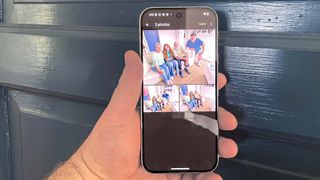
In addition to my Pixel 9 Pro XL vs. Galaxy S24 Ultra camera face-off — remember, the Pixel 9 Pro has the same camera specs as the XL model — my colleague Philip Michaels has a Pixel 9 Pro vs. iPhone 15 Pro camera comparison. If that's enough, I took the Pixel 9 Pro XL for an astrophotography session.
Google continues to make excellent camera phones with the Pixel 9 lineup, and in my opinion, the Pixel 9 Pro is the best of the bunch. You get the same triple camera setup as the larger Pixel 9 Pro XL, but you save $100 on the cost. And considering the Pixel 9 Pro XL topped the Galaxy S24 Ultra with that same camera setup, we think Android users should turn to the Pixel 9 Pro for the best Android camera phone.
It's the Pixel 9 Pro's 5x optical zoom and its crystal clear close-ups that really stand out. In our testing, the Pixel 9 Pro's zoom proved a lot crisper than those shot by the iPhone 15 Pro — not surprising as the latter can only muster a 3x zoom. When you need to push things further, the Pixel's Super Res Zoom feature can go up to 30x while minimizing the noise that can creep into a shot.
A larger ultrawide lens on the Pixel 9 Pro helps with those shots and adds a fantastic Macro Focus feature that lets you get up close to a subject for detailed shots. But the real star here is the photo-processing features that produced balanced colorful shots in our testing. You'll also appreciate AI-powered editing tools like a Reimagine feature that enhances selected areas of a shot, even if the results aren't always realistic and an Add Me tool that lets you insert yourself into group shots instead of always just taking the pictures.
The iPhone 15 Pro Max and Galaxy S24 Ultra have more camera capabilities overall. But this is the camera phone to get for less than $1,000.
Read our full Google Pixel 9 Pro review.
The best low cost camera phone






Specifications
Reasons to buy
Reasons to avoid

To find out why I think the Pixel 8a is the best cheap camera phone, check out this Pixel 8a vs. iPhone SE photo showdown. I also took over 200 photos between the Pixel 8a vs. Pixel 8 to see their differences. And my colleague Philip Michaels tested the Pixel 8a against the Galaxy A35 with another camera comparison between the Pixel 8a and OnePlus 13R.
The Google Pixel 8a isn't a big leap forward from the Pixel 7a it replaces as Google's budget-priced phone. The new model uses the same 64MP main camera as its predecessor, and the photo-processing capabilities are at the same high level. While Pixel 7a owners have little reason to upgrade, newcomers looking for a low-cost camera phone will appreciate the high-quality output produced by the Pixel 8a.
The new Tensor G3 chipset powering the Pixel 8a also enables some very impressive photo editing tools already available on the Pixel 8 flagships. You can use Magic Editor to reposition and resize the subjects of your photos, while Best Take can swap in faces to ensure nobody's blinking when you take a group photo.
Best of all, the Pixel 8a does feature improved battery life, long an area where previous Pixel phones have struggled. By besting the average smartphone by 1.5 hours on our battery test, you won't have to worry about losing power when you take the Pixel 8a on an extended photo shoot.
Given the upgrades with the just announced Pixel 9a, like its new main camera, Night Sight mode, and macro shooting capabilities, it could very well land much higher on this list once it's put through Tom's Guide's testing.
Read our full Google Pixel 8a review.
The best iPhone value






Specifications
Reasons to buy
Reasons to avoid
Not everyone wants to spend $999 or more on a new phone, even if the camera are the best available. The $799 iPhone 16 provides a compelling alternative to the iPhone 16 Pro by still producing great shots without some of the higher-end hardware you'll find on Apple's Pro models.
For example, there's no telephoto lens on the iPhone 16. Instead, you use the 48MP main camera to crop in on a shot, effectively mimicking a 2x optical zoom. The upgraded ultrawide lens in the iPhone 16 may not feature a 48MP sensor, but the sensor is physically larger to let in more light. And you can now shoot macro shots on the iPhone 16's ultrawide lens that turned out very well in our testing. What's more, the iPhone 16 picks up the same Camera Control button Apple added to its Pro models.
As for our photo testing, the iPhone 16 produced shots that not only held their own against iPhone 16 Pro photos but also topped images from other phones in its price range. Sample iPhone 16 photos show a great deal of dynamic range, and the phone also proved to handle low-light shooting situations with ease.
The camera lenses on the back of the iPhone 16 have been rearranged, but not for aesthetic reasons — with the cameras stacked on top of each other, you can now capture spatial video on Apple's least expensive flagship.
Just as the iPhone 16 Pro and iPhone 16 Pro Max share a camera setup, so does the regular iPhone 16 and the larger iPhone 16 Plus. You can save $100 by opting for the standard model, or you can get the Plus and enjoy a bigger screen and longer-lasting battery — the camera experiences will be the same.
Read our full iPhone 16 review.
Best single lens camera phone






Specifications
Reasons to buy
Reasons to avoid
Like the iPhone SE (2022) it replaces, the iPhone 16e features just one rear camera, though it’s a big upgrade for Apple’s entry-level phone. Instead of the 12MP shooter of its predecessor, the iPhone 16e relies on a 48MP camera, matching the specs of the main camera on the iPhone 16. And like that phone, the camera on the iPhone 16e can approximate a 2x zoom by cropping in one shots that turned out to be surprisingly detailed in our testing.
You clearly give up some flexibility with the iPhone 16e, which lacks the ultrawide camera found on other iPhone 16 models not to mention the dedicated telephoto lens that the Pro versions offer. That said, I’m pretty impressed with the quality of iPhone 16e photos, especially when compared to the iPhone 16 and Pixel 8a. iPhone 16e images have a lot of dynamic range, and the photo-processing algorithms on the phone do a great job of boosting color. I compared the iPhone 16e camera’s output to the iPhone 16 and iPhone SE, and the 16e wins in a lot of different scenarios.
In addition to the camera hardware, the A18 chipset on board the iPhone 16e allows this $599 phone to support Apple Intelligence features. For photo users, that means tools like Clean Up for removing unwanted objects and Memory Movies for turning photos into auto-generated slideshows are at your disposal — some pretty nifty tools for a phone at this price range.
Read our full iPhone 16e review.
Most improved camera phone






Specifications
Reasons to buy
Reasons to avoid
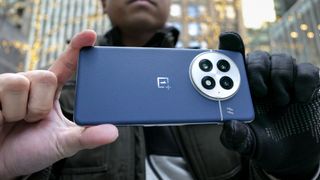
The OnePlus 13 camera comparisons illustrate just how much OnePlus has improved the camera performance of its flagship. The OnePlus 13 nearly beat the Galaxy S24 Ultra in our camera face-off, while a OnePlus 13 vs. iPhone 16 Pro Max camera showdown also proved closer than expected.
Slowly and steadily, OnePlus has ditched the long-standing stigma about its cameras underperforming against the competition. With the OnePlus 13, it continues to stand up well against anything captured by top Samsung and Apple camera phones. While the credit still goes to its Hasselblad partnership, the hardware combined with new OnePlus AI features vastly improves its performance.
The biggest change this year is that all three cameras have 50MP sensors, complete with a telephoto camera with optical zoom capabilities to 3x. The result is sharper, more detailed zoom shots that compare more favorably to other top camera phones. But the hardware is only one part of the equation as new algorithms, like the with its Dual Exposure Technology, that allows it to better capture fast moving subjects. AI also improves the quality of its telephoto captures as well, by analyzing the image and applying upscaling effects to better expose the details.
However, there's still room for improvement with its low light capture. It's certainly much better than the OnePlus 12, but it's still a smidge underexposed compared to the iPhone 16 Pro Max.
Read our full OnePlus 13 review.
Best Samsung camera phone value






Specifications
Reasons to buy
Reasons to avoid
As impressive as the Galaxy S25 Ultra's cameras are, that's a pretty costly phone at $1,299. For $500 less, the Galaxy S25 delivers high-quality photos and the same Galaxy AI photo editing features found on the Ultra.
For its cost, it offers a much more robust setup with its triple cameras, whereas the similarly priced iPhone 16 and Pixel 9 offer a dual-camera arrangement. The Galaxy S25 makes a strong case for itself thanks in part to the excellent performance from its 50MP main camera and the tweaks from its new AI-enhanced ProVisual Engine. Best of all, it features a telephoto camera with 3x optical zoom.
Not only is it a still shot powerhouse, but the Galaxy S25 is equally a solid video camera phone with support for 8K video recording and new Galaxy AI features such as Audio Eraser to eliminate ambient noise.
Read our full Samsung Galaxy S25 review.
The best foldable camera phone






Specifications
Reasons to buy
Reasons to avoid
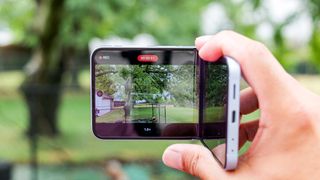
Here's why I think the Galaxy Z Flip 6 is the best foldable camera phone after my Galaxy Z Flip 6 vs. Motorola Razr Plus (2024) photo face-off.
After years of flip phones that made do with a 12MP main camera, Samsung updates the Galaxy Z Flip 6 with a 50MP sensor for the main lens. That not only means sharper pictures from this foldable phone, but the main camera can take advantage of pixel binning to approximate a 2x optical zoom. That's a clever workaround having to fit a dedicated telephoto lens into such a compact folding design, where space is at a premium.
The improved camera on the Galaxy Z Flip 6 performs well, topping the Motorola Razr Plus (2024) when we compared their camera output. Galaxy Z Flip 6 users will also appreciate the ability to use the exterior cameras to shoot selfies, with the Flip's 3.4-inch cover display acting as a view finder. Galaxy AI features — including ones that convert your images into illustrations or cartoons round out the camera features.
The Galaxy Z Flip 6 costs $100 more than its predecessors, but if you're looking for the best cameras on a foldable phone, you won't mind paying the premium price. What's special about this flip-style phone is that you can pair the rear cameras with the external screen to capture better looking vlogs and videos of yourself.
Read our full Samsung Galaxy Z Flip 6 review.
How we test camera phones
When we evaluate the best camera phones, we pick phones of comparable prices and capabilities and put them through a range of head-to-head comparisons. We pick common shooting situations — landscapes, indoor and outdoor shots, portraits and selfies in daylight and at night. We also test out each camera lens, including ultrawide angle and telephoto lenses if the phone features those.
In addition to testing the rear lenses of each phone, we also test the front camera, snapping selfies in both standard and portrait mode. We then compare the results to similar camera phones.
Photos used in our comparisons are taken with the default settings on each camera. Even if a phone offers manual controls, we don't test those, as we want to replicate the experience the typical smartphone user would have using the camera app on a device.
In each of our smartphone reviews, we also factor in any special features, such as dual lenses and what they enable, Portrait Modes, and other special modes, before we come to a conclusion.
Camera testing is the most relevant evaluation for picking the best camera phones, but our smartphone reviews include other testing, such as performance testing, battery testing and display testing. You can see the full results of those tests — outlined in our explanation of how Tom's Guide tests and reviews smartphones — when we rate the best phones overall and in our 200 photos head-to-head shoot outs.
How to pick the best camera phone
There are many factors to consider if camera quality factors heavily into your smartphone purchasing decision. A good way to start is by asking yourself what kinds of photos you see yourself taking. Not all multi-lens cameras are created equal — some have ultrawide lenses for stunning landscapes, others have telephotos for zoomed-in shallow-depth-of-field portraits, and a lot of premium devices offer both.
The newest flagships from the likes of Samsung and Huawei even have periscope-style lenses that offer varying degrees of optical zoom. The best historically offered 10x magnification, which can rival the power of DSLRs.
Something else to consider: Megapixels don’t matter as much as aperture. Cameras with a wider aperture (lower ƒ-stop numbers translate to wider lenses) let in more light, which greatly helps produce better shots in the dark. The high-megapixel sensors found in the latest devices are nice, but it's a common misconception that pixel count directly translates to better-looking photos.
Do you need a portrait mode that allows for bokeh backgrounds? That’s where the subject of the photo is in sharp focus, while an artistic blur blankets the rest of the scene. Although it started as a feature exclusive to multi-camera phones, even cheaper phones like the single-lens iPhone 16e can capture bokeh-effect portraits. Some devices even let you adjust the strength of the blur before and after you take a shot.
You also need to consider what kind of post-capture processing your phones are doing. This has been the norm for many years now, and with the rise of AI it means there are even more ways to improve and enhance your images after the shutter has been activated. However not all camera processing is equal, and it's not the kind of thing you can really compare without seeing photos side-by-side — which is why we always put phone cameras through their paces.
Front camera specs are important, too. In a world where we’re taking more selfies than ever, you shouldn’t overlook a phone’s front camera. Many front cameras, like the ones on the iPhone 16 and Pixel 9, can actually perform the same portrait mode effects that rear cameras pull off. Some phones feature two front cameras, with the second lens pulling in more background details, though that trend has fallen out of fashion recently.
Finally, don’t forget about video. Your cameras shoot more than just still images. Consider what resolution the camera captures video at, along with the frame rate. A word to the wise, though: Be wary that ratcheting up the resolution will result in clips that take up much more space on your smartphone's internal storage.
For a good rundown of what to consider when looking for the best camera phone, check out our guide on which camera specs you should pay attention to.
Sign up to get the BEST of Tom's Guide direct to your inbox.
Get instant access to breaking news, the hottest reviews, great deals and helpful tips.

John’s a senior editor covering phones for Tom’s Guide. He’s no stranger in this area having covered mobile phones and gadgets since 2008 when he started his career. On top of his editor duties, he’s a seasoned videographer being in front and behind the camera producing YouTube videos. Previously, he held editor roles with PhoneArena, Android Authority, Digital Trends, and SPY. Outside of tech, he enjoys producing mini documentaries and fun social clips for small businesses, enjoying the beach life at the Jersey Shore, and recently becoming a first time homeowner.
